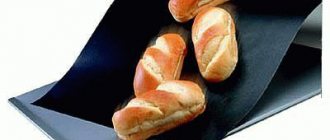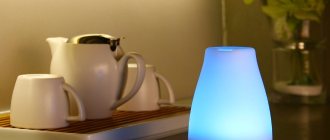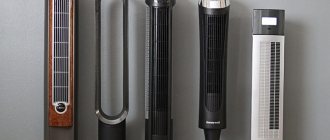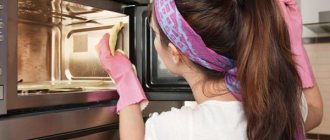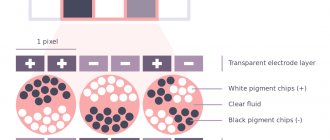The name of the sous-vide cooking technology is translated from French as “under vacuum.” It is this principle that underlies the method. The food is placed in vacuum bags, and then all the air is removed from it. Then a plastic bag containing, for example, meat and vegetables is immersed in water and heated. The boiling point should be 50-60 degrees, no more. Even though sous vide became popular 50 years ago, many people still don't know about this method.
But it's never too late to start. Even those who rarely cook and mostly cook something very simple can master vacuum cooking. Food cooked in a vacuum is difficult to spoil. Even the duration of preparation, which at first scares you away, is later perceived as an advantage, because once you put the bag in water, you can forget about it for an hour or more.
Source: Instagram (@evildoerssmile)
You don’t have to watch the pan, you don’t have to remove the foam every 10 minutes - the food won’t burn and the water won’t boil away. In this article we have collected all the necessary information that you will need if you want to prepare dishes using this technology.
Do not miss
- Do not miss
Healthy meats: 5 types of meat you definitely shouldn’t give up
Scientists at the stove
Let's start with an excursion into the recent past - the 60s of the 20th century. It was then that chemist Hervé Thies and physicist Nicholas Curti came up with the idea to improve the well-known method of heat treatment using a scientific approach. As you know, in order for food to remain juicy and soft, you need to cook it quickly and at high temperatures. Scientists have gone the opposite way. They took a piece of meat and several types of vegetables and cooked them under low temperatures for a long time. The main innovation was that these products were prepared in vacuum packaging in a water bath. This, in fact, is where the name sous-vide comes from, which translated from French means “in a vacuum.” This approach exceeded all expectations. The meat and vegetables turned out very juicy, soft and tasty.
Food in a vacuum
In full screen
Today, sous vide cooking technology has become more advanced. The products are vacuum sealed and heat treated at low temperatures ranging from 50 to 85 °C. It is clear that with this mode it will take much more time than with boiling, stewing or frying.
One of the main principles of sous vide is to strictly adhere to the prescribed temperature and cooking time. There are special tables where precisely calibrated cooking temperatures and durations are indicated for each product. Moreover, you can choose the appropriate degree of readiness yourself.
Making sous vide dishes at home without special equipment is problematic.
Some housewives place a piece of meat in a food-grade plastic bag with a zip fastener and pump out the air using a straw. The meat is then placed in a water bath or in a large pan of water and kept for an average of 1 to 5 hours. The difficulty is that all this time it is necessary to maintain the same temperature. This means you will have to constantly check your thermometer.
Cons of sous vide
Take a lot of time. There are also some downsides; sous vide technology is not suitable if you want to cook something quickly. On average, it takes up to 2 hours to cook vegetables, up to 80 minutes for fish, and up to 3 hours or more for meat. Sous vide takes a long time.
| Dish | Cooking temperature | Time |
| Tender fish | +50 °C | 40 to 80 minutes |
| Boneless marbled beef steak – medium | +58 °C | From 45 minutes to 2 hours |
| Marbled beef steak with bone – medium | +58 °C | From 4 to 7 hours |
| Pork - well done | +70 °C | From 3 to 3.5 hours |
| Chicken breast – well done | +75 °C | From 1 to 3 hours |
| Vegetables | +85 °C | 2 to 3 hours |
No crust. Also, the method will not appeal to those who like food with a crust. The vacuum eliminates this crispy bonus. You can add it if, after a water bath, dry the vegetables or meat and additionally fry in a frying pan. Some housewives do frying, including in order to kill pathogenic bacteria that may remain when cooking meat or fish.
Some foods are not suitable for sous vide. For example, pastas, cereals and vegetables such as asparagus, beans, broccoli. Pasta and cereals cannot be cooked without water, which has nowhere to come from in a sealed bag, and the listed vegetables change color during prolonged heating.
Important! For sous vide, you only need to buy bags made of polypropylene and high- and low-density polyethylene. They will not release toxins when heated. Also, dishes prepared sous vide should be eaten immediately. If you want to save them until your next meal, you must first cool the food in an ice bath to +1 degree, and then put it in the freezer.
Source: Instagram (@spaniot)
Technical assistants
In full screen
It is much more convenient and easier to cook in a sous vide machine or sous vide maker. They come in two types. A water oven looks similar to a multicooker or bread maker. Inside it there is a deep chamber and a removable holder. It helps to properly place the vacuum bag with food inside so that the heat is distributed evenly. The temperature range of the water furnace is from 25 to 90 °C.
The thermostat, reminiscent of an immersion blender, is also easy to use. This gadget heats water to the required temperature and maintains it for the required time. It can be used either in a regular large saucepan or in a special sous vide container. The main thing is that they match each other in size. It also doesn’t hurt to get a vacuum sealer. This practical device will seal your food in plastic for you.
What you need for sous vide
To cook food using vacuum technology you will need:
- Device for heating water.
- Holder grids.
- Thermal insulation balls.
- Vacuum packing machine.
- Gastronorm containers.
- Cold accumulator.
We explain what is needed and why.
Heating device. The device maintains the desired temperature and after a certain time mixes the water so that the heat is better distributed. There are two types: stationary sous vide devices and immersion thermostats. The price of the first device starts from 20 thousand rubles. Externally, a stationary sous vide device looks like a large microwave oven. Only the lid on top.
Each such device has:
- thermostat;
- temperature sensor with 0.1% accuracy
- pump for accelerating water.
The immersion thermostat is not so voluminous; its price starts from 4 thousand rubles. What distinguishes it from the stationary one is that food is not immersed in it, but vice versa. The device is lowered into a container of water, attached with a clothespin to any wall and heats it to the desired temperature. The submersible apparatus is also equipped with circulation pumps, so the water in the pan will be stirred periodically.
Source: Instagram (@dok_distillery)
Thermal insulating balls for thermostat. Cooking sous vide can sometimes take a day or two. For example, if you set meat cuts to boil. During this time, a lot of water evaporates; if there is not enough liquid in the pan, the thermostat will turn off.
To prevent the water from evaporating, you need to close the container with a lid. But if you have an immersion thermostat rather than a stationary one, then it will not help, because the device will not allow you to close the pan tightly. In this case, thermal insulating balls for the thermostat come to the rescue. They will cover the surface of the water and prevent it from evaporating.
Do not miss
- Do not miss
Classic with apples and more: 8 delicious and unusual charlotte recipes
Grill holder. This item will be needed if several bags of food are placed in the pan. The grate will prevent the bags from floating and allow hot water to circulate freely between them. On Aliexpress such a grill holder costs 1,500 rubles.
Gastronorm container made of polycarbonate for thermostat. Boxes made of light and durable food-grade plastic are needed to place bags in. It is better to take transparent ones so that you can see what is happening inside.
Gastronomy containers should not be small. Preferably at least 11 liters, so that large bags and holding grids can be placed in it. On average, one such plastic box costs 1,200 rubles.
Vacuum packing machine. Let us immediately note that you can do without it. Many, for example, resort to the method of Georges Pralu and simply wrap food in cling film. But it takes a lot of time. Therefore, for those who don’t want to bother so much, it’s easier to buy a vacuum sealer. The lowest price for such a device is 4 thousand rubles.
The operating principle of the device is as follows:
- You put the product in the bag.
- You insert the edge of the bag into the device.
- The packer pumps the air out of the bag and seals the edge.
Cold accumulator. You will need it if you decide to save food. Food cooked sous vide must first be cooled. Some people put them in an ice bath of water and ice, while others simply line the bags with cold accumulators. A couple of such batteries will cost 300 rubles.
Culinary tricks
The main advantage of sous vide cooking is that any food turns out incredibly juicy and soft. This is due to the fact that at low temperatures the cell membranes do not burst, and all the juices are retained inside. Therefore, even the driest and toughest meat turns out tender and juicy. Vegetables remain crunchy and their texture softens. Delicate fish flesh will always be tender, elastic and appetizing. You can even cook fruit using the sous vide method. Say, for baby puree, pancake filling, sweet sauces or desserts.
Sous vide makes dishes less caloric and better reveals their natural taste. At the same time, valuable substances are completely preserved. And if you use a marinade with spices, they penetrate deeper into the texture of the meat or fish, helping to achieve a richer, more balanced flavor. Among other things, sous vide is a reliable and safe method of preserving ready-made dishes. They completely retain their taste and beneficial properties for a long time.
Pros of sous vide
Preserves the nutrients of products. Sous vide is a gentle cooking technique. The cell membrane of products in a vacuum is not destroyed when exposed to low temperatures. Therefore, the finished dish remains juicy, and vegetables do not lose color during simmering. Plus, they don’t have the dryness that sometimes appears after prolonged cooking.
No special skills required. To cook food using the sous vide method, you do not need to undergo training or practice for a long time. Simply put the food in a bag, remove as much air as possible from it, and immerse it in water. You don't even need to monitor the process. The main thing is that the temperature does not exceed 100 degrees.
Source: Instagram (@meat_and_ko)
You can cook several dishes at once. Due to the fact that all the products are in bags, they will not mix in one pan. Therefore, you can download several packages with different content at the same time. For example, one may contain poultry or beef, while another may contain fish, and the third may contain vegetables. Each dish can be cooked together with its own seasonings and not interfere with its “neighbor”.
Taste. Even the toughest meat becomes soft after sous vide. Fatty fish varieties do not crumble into mush in the pan, but retain their shape and attractive appearance.
Should you believe myths?
When talking about sous vide, one cannot ignore all the criticisms. One of the main prejudices is that vacuum bags release toxic substances when heated. They don't really pose any threat. These bags are made of safe food grade plastic. If it starts to melt, it will be at a temperature much higher than 100 °C, and such high temperatures are unacceptable for sous vide.
Another misconception is related to the fact that weak heat treatment is not enough to destroy the parasites hiding in raw meat or fish. In fact, there is no reason to be afraid. For example, salmonella, listeria and other parasites die at temperatures above 54.5 ° C for longer than 15 minutes. Clostridia are neutralized by marinating fish in lemon juice. Most parasites die when frozen for 5–7 days at temperatures below –18°C. Otherwise, it is enough to adhere to the temperature tables. The values indicated in them ensure the necessary pasteurization and safety of prepared dishes.
Long aged steak
Now let's see how the sous vide method works in practice. Let's start with a sous vide recipe for juicy beef steak.
Ingredients:
- beef steaks - 2 pcs.
- salt and black pepper - to taste
- garlic and spices for beef - optional
First, rinse the steaks in water and dry with a paper towel. Rub the pieces of meat with salt and black pepper. You can add ready-made beef seasoning or chopped garlic. But be careful, meat cooked using sous-vide technology deeply absorbs spices, so you will need less of them than when frying. We place the steaks in vacuum bags and send them to a sous vide machine or container with a thermostat. Temperature - from 54 to 66 °C, cooking time - from 60 minutes to 5 hours. It all depends on the desired degree of readiness. The minimum indicators correspond to the rare level, the maximum - welldone. Let the meat cool, remove from the vacuum bag and serve with any side dish.
When did sous vide technology appear?
The sous vide technique was first described in 1799 by the Anglo-American scientist Benjamin Rumfoord. In the 1960s, the method was improved by his French colleagues, who gave the technology its name. Before 1970, sous vide was used only in laboratory research. The first to cook restaurant food in vacuum bags were biochemist Bruno Goussot and butcher Georges Pralu. They became the founders of vacuum cooking, although they came to the method in different ways.
Pralu discovered sous vide while preparing the favorite dish of all the French - fou agras. He wanted to maintain the fatty liver weight and tried different methods. As a result, the sous vide method turned out to be the most effective - Pralyu wrapped the liver in cling film and cooked it in a water bath. The result pleased him: the weight and shape of the dish did not change.
Source: Instagram (@olya_lya_frau)
Biochemist Gousseau studied sous vide from a scientific point of view. He was encouraged to learn sous vide by the owner of a fast food company. He asked a scientist to develop a method for using cheap meat. Goussot, who was then working in a French laboratory, also used vacuum technology. He liked it the most because the meat packed in the bag, after a long heating in a 60-degree water bath, softened and did not lose its juiciness. It was difficult to distinguish an inexpensive sirloin steak from a premium one.
The main advantage of the sous vide cooking technology, which Gousso and Pralu noted, is the ability to preserve the freshness and juiciness of products, including meat, longer.
Juicy and tender salmon
Sous vide fish is also quite easy to prepare. We suggest you try juicy salmon. You can place several pieces of fillet in one bag at once. The main thing is not to fill it too tightly.
Ingredients:
- salmon fillet – 400 g
- olive oil - 1 tbsp. l.
- sea salt and black pepper - to taste
- thyme - 2-3 sprigs
- water - 1 liter
- coarse salt - 2-3 tbsp. l.
We dilute coarse salt in water. Dip portions of salmon into the solution, leave for half an hour, rinse under water and dry well. Spray the fish with olive oil and thoroughly absorb it into the flesh, then rub it on all sides with salt and pepper. Break off the thyme sprigs and sprinkle on top. We pack the salmon pieces in a vacuum bag, put them in a sous vide or put them in a container with water and a thermostat. The optimal cooking temperature is 50 °C, time is 40 minutes. When the salmon has cooled, remove the vacuum packaging, sprinkle the steaks with lemon juice and you are ready to serve.
Now you know how to cook sous vide dishes. If you follow a healthy diet and want to keep up with culinary trends, it's definitely worth a try. And if you have already cooked something using the sous vide method, share your impressions in the comments and tell us what dishes you turned out to be.
Recipe: how to cook duck breast using sous vide technology
Now that we have talked about the pros and cons of the method, listed and explained what may be needed for vacuum cooking, it’s time to describe the algorithm for preparing some dish. For example, duck breast.
- Choose the recipe you will use.
- Rinse and dry the duck breast. Excess moisture will interfere with uniform heating.
- Season the breast with salt and seasoning to taste.
- Place the meat in a bag and tuck the edges in tightly to ensure they remain dry.
- Evacuate the air from the bag.
- Pour water into a pan and heat it to 50-60 degrees. Afterwards, immerse the breast bags in water.
- Leave the bag to cook for the time specified in the recipe.
- The finished dish can be served immediately, either lightly fried and served, or cooled in an ice bath and placed in the freezer.

